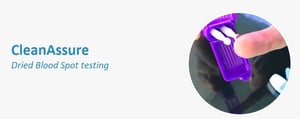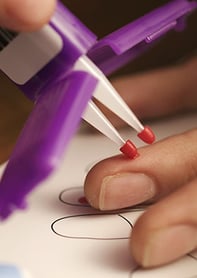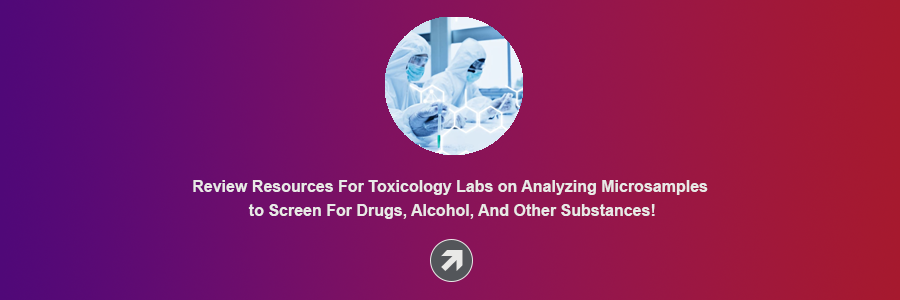Share this
how capillary blood microsampling is changing addiction recovery
by Neoteryx Microsampling on Feb 15, 2019 4:04:00 AM
 A critical aspect of addiction recovery programs is to monitor those in the program for evidence of a relapse. It is typical for people in addiction recovery programs to routinely submit urine or blood samples for lab analysis.
A critical aspect of addiction recovery programs is to monitor those in the program for evidence of a relapse. It is typical for people in addiction recovery programs to routinely submit urine or blood samples for lab analysis.
If their biological samples show evidence that they have consumed prohibited substances after enrolling in the program, their treatment will be adjusted to address the relapse and substance reuse.
Until recently, the most common way to screen patients in these programs was via urine sampling, or the "pee-in-a-cup" method. That approach is changing.
Recovery programs are facing increasing burdens of legal liability and pressure to produce results in the face of a devastating opioid crisis. In an effort to make drug testing for these programs more efficient and precise, some toxicology and clinical laboratories are exploring finger-stick blood microsampling. San Diego-based Alcala Labs is an example of how small changes can make a big difference. Alcala labs uses Mitra® microsampling devices based on VAMS® technology.
San Diego-based Alcala Labs is an example of how small changes can make a big difference. Alcala labs uses Mitra® microsampling devices based on VAMS® technology.
Alcala uses VAMS technology, developed by Neoteryx, in its CleanAssure™ system, which it supplies to drug and addiction recovery facilities across the United States. It replaces outmoded, binary pee-in-a-cup methods with dried blood collection using Mitra devices.
Capillary blood collection methods from a fingertip are preferred in environments where venipuncture with needles may not be the most appropriate way to go. This new approach is more precise and reliable than urinalysis, helping addiction professionals stay informed and patients stay clean.  “We believe that transitioning from urine to dried blood samples will simplify the process for patients and ease the burden for recovery centers,” says Matt Rifat, Alcala Labs President. “We are pleased that microsampling has become a viable option, and the VAMS technology presented us with the best available solution.”
“We believe that transitioning from urine to dried blood samples will simplify the process for patients and ease the burden for recovery centers,” says Matt Rifat, Alcala Labs President. “We are pleased that microsampling has become a viable option, and the VAMS technology presented us with the best available solution.”
The work of Alcala Labs is shedding light on how smarter, more specific techniques can pave the way for a new world of addiction care that is at once more scientific and more compassionate, with transformative implications for the entire landscape of health and wellness, wherever perfecting patient monitoring is paramount.
From 10 or 20 microliters of blood, leading scientific researchers, toxicology labs and addiction treatment professionals can yield a lot of information, a lot of innovation, and a whole lot of hope.

Image Credits: Trajan, Neoteryx, Alcala Labs, Shutterstock
Share this
- Microsampling (206)
- Research, Remote Research (119)
- Venipuncture Alternative (105)
- Clinical Trials, Clinical Research (83)
- Mitra® Device (73)
- Therapeutic Drug Monitoring, TDM (51)
- Dried Blood Spot, DBS (39)
- Biomonitoring, Health, Wellness (30)
- Infectious Disease, Vaccines, COVID-19 (24)
- Blood Microsampling, Serology (23)
- Omics, Multi-Omics (21)
- Decentralized Clinical Trial (DCT) (20)
- Specimen Collection (18)
- Toxicology, Doping, Drug/Alcohol Monitoring, PEth (17)
- Skin Microsampling, Microbiopsy (14)
- hemaPEN® Device (13)
- Preclinical Research, Animal Studies (12)
- Pharmaceuticals, Drug Development (9)
- Harpera Device (7)
- Industry News, Microsampling News (5)
- Antibodies, MAbs (3)
- Company Press Release, Product Press Release (3)
- Environmental Toxins, Exposures (1)
- July 2025 (1)
- May 2025 (1)
- April 2025 (2)
- December 2024 (2)
- November 2024 (1)
- October 2024 (3)
- September 2024 (1)
- June 2024 (1)
- May 2024 (1)
- April 2024 (4)
- March 2024 (1)
- February 2024 (2)
- January 2024 (4)
- December 2023 (3)
- November 2023 (3)
- October 2023 (3)
- September 2023 (3)
- July 2023 (3)
- June 2023 (2)
- April 2023 (2)
- March 2023 (2)
- February 2023 (2)
- January 2023 (3)
- December 2022 (2)
- November 2022 (3)
- October 2022 (4)
- September 2022 (3)
- August 2022 (5)
- July 2022 (2)
- June 2022 (2)
- May 2022 (4)
- April 2022 (3)
- March 2022 (3)
- February 2022 (4)
- January 2022 (5)
- December 2021 (3)
- November 2021 (5)
- October 2021 (3)
- September 2021 (3)
- August 2021 (4)
- July 2021 (4)
- June 2021 (4)
- May 2021 (4)
- April 2021 (3)
- March 2021 (5)
- February 2021 (4)
- January 2021 (4)
- December 2020 (3)
- November 2020 (5)
- October 2020 (4)
- September 2020 (3)
- August 2020 (3)
- July 2020 (6)
- June 2020 (4)
- May 2020 (4)
- April 2020 (3)
- March 2020 (6)
- February 2020 (3)
- January 2020 (4)
- December 2019 (5)
- November 2019 (4)
- October 2019 (2)
- September 2019 (4)
- August 2019 (4)
- July 2019 (3)
- June 2019 (7)
- May 2019 (6)
- April 2019 (5)
- March 2019 (6)
- February 2019 (5)
- January 2019 (8)
- December 2018 (3)
- November 2018 (4)
- October 2018 (7)
- September 2018 (6)
- August 2018 (5)
- July 2018 (8)
- June 2018 (6)
- May 2018 (5)
- April 2018 (6)
- March 2018 (4)
- February 2018 (6)
- January 2018 (4)
- December 2017 (2)
- November 2017 (3)
- October 2017 (2)
- September 2017 (4)
- August 2017 (2)
- July 2017 (4)
- June 2017 (5)
- May 2017 (6)
- April 2017 (6)
- March 2017 (5)
- February 2017 (4)
- January 2017 (1)
- July 2016 (3)
- May 2016 (1)
- April 2016 (2)


No Comments Yet
Let us know what you think